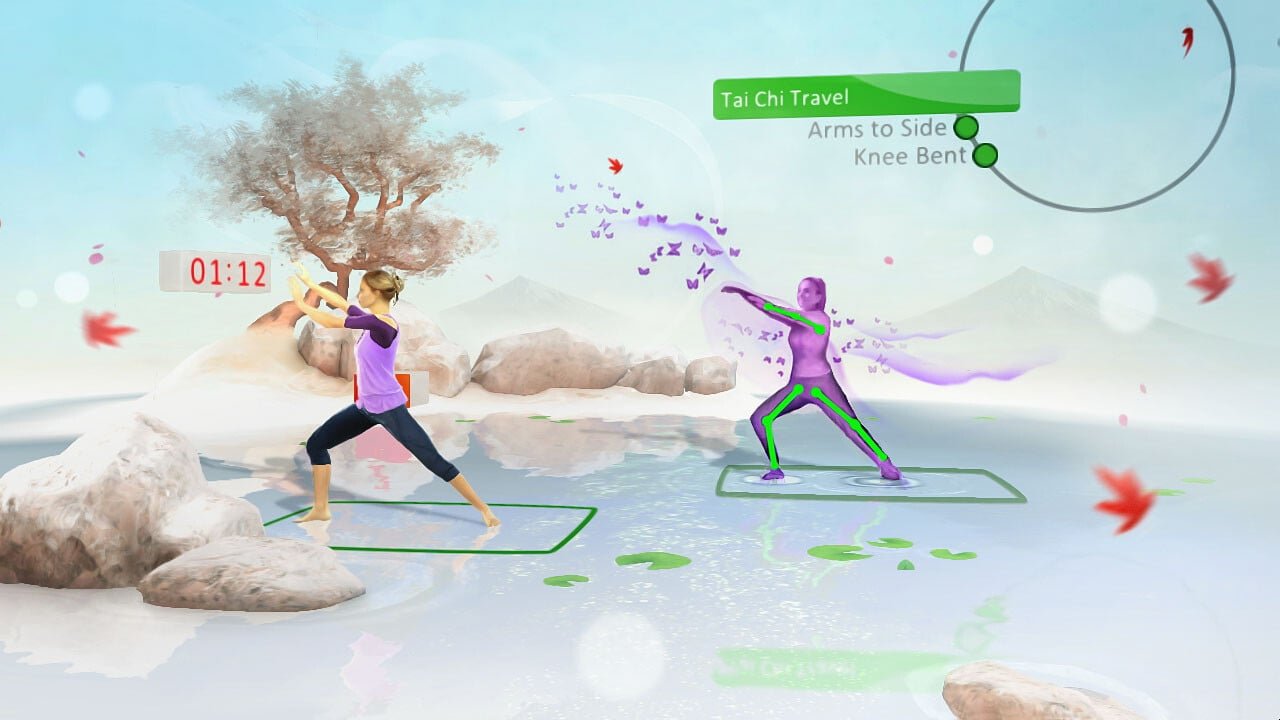Fitness is not a word that comes to mind when talking about games, but it’s a niche that exploded into mainstream awareness with the advent of Wii Fit.
Thanks to the debut of Microsoft’s Kinect, new ways to get fit have debuted, and we spoke with Nicola Godin the Game Designer on Your Shape Fitness.
C & G Magazine: Your Shape is coming into a market that’s already been hit with titles like Wii Fit and EA Sports Active. Is the climate still receptive to this kind of software or have you noticed any changes?
Nicola Godin: Yeah, totally. The climate is… how can I say… the fitness game industry is very young, and the technology was very young when we saw the first fitness games going out. That’s why all these games were good, but they lacked precision. They lacked seriousness in their games. Most of the companies were using avatars and mini-games… all of the seriousness was missing. Not just the seriousness, but real fitness. Good fitness. Games for money, easy and fast.

I think the industry for fitness games is very young and will go further and further. People love to go to the gym, but there a lot of people that don’t like gyms but love to train. DVDs are nice, but you can’t interact. But something in a game, with a trainer, it changes even the way of training. Since the camera, especially with Kinect is always open to you and always looking at you. It’s something that is always with you, which is very different. We are one of the games that will help to bring a layer of seriousness and a great game in terms of fitness, we’ll be able to do it properly.
A lot of games use a 2D camera, which is okay, but you miss something. There are so many things you need to do correctly, to not get hurt and really train properly. That’s why, with the technology growing up, the market will grow as well. At a certain point it will stop, like everything, but right now it’s just the beginning, I think, of the fitness game industry. The real beginning of it.
CGM: Is there anything you can highlight about what the Kinect version does better than previous motion control iterations?
NG: In terms of structure, we can say nothing has changed, because you can do a lot of things in terms of training. But with Kinect, just because of the fact that your whole body is mapped and tracked… and when you compare it to the Wii, like for Your Shape there was a camera, but it was a 2D camera, and it had the Wii Remote, which was a big limitation. Especially for movement. With [the previous] Your Shape you could shake it, from the couch, and you’d be okay. That’s where Kinect is ahead, especially in terms of being able to track yourself in a play space, in 3D. And also with the RGB [camera], I don’t know if you saw it, but you can see yourself in real time. It’s just another layer of personalizing the game to you. We decided to design it in a way that, if you’re going to be using it in front of a screen, it’s going to be tailor made to your size, which we were not able to do with the Wii, it wasn’t that customizable.
With Kinect, because we know you’re in a play space, we can change a lot of things. We track you, we put the menu in with you, what you eat, what you do, it changes everything. In terms of structure of fitness, it stayed pretty much the same.
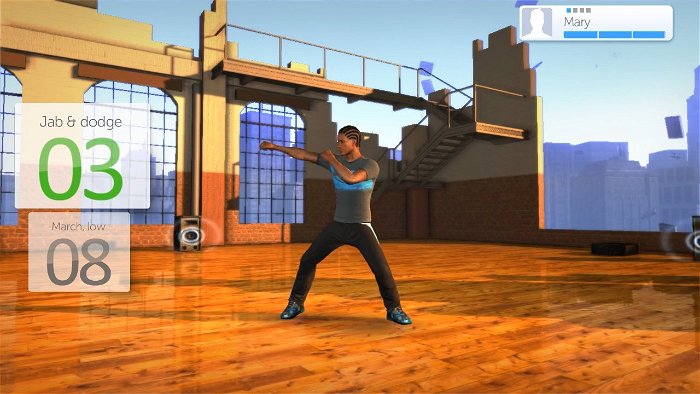
CGM:But on the other hand, Wii Fit, used the Balance Board to track your weight progress. How does Kinect do that without a scale function?
NG: We looked at the weight issue—if you can even call it an issue at this point—and it’s more of a gadget for us, the weight. We decided to drop it. Everyone I know that used Wii Fit were shocked by their weight, because muscular mass is heavier than fat. It changes a lot of things when you have to classify yourself by weight, and we didn’t want to do that. In our game, you can use the weight that you put in yourself, and it uses that to count the number of calories you’re burning. It’s based on how much you’re moving in front of the camera.
Our goal with Your Shape is just to get people to move. Every kind of player, from beginner to expert, we don’t want to push the weight in their faces. We’ll be honest, we don’t care about your weight, just move and progress in at your own rate.
CGM: So you found the Body Mass Index system that Wii Fit used problematic.
NG: It’s a good thing when you have a personal trainer that knows where your fat is and where your muscle is. Otherwise it’s just a gadget for us and we didn’t want to use it. It was more important for us that people have the motivation to go on, to continue, and not have a comment in their face that “You are obese.” We just want to focus on the process of the player, to give him motivation and keep him motivated.
CGM: With Your Shape being out first on the Wii and now the 360, is there a PS3 version in the works using Move?
NG: First, you should know the first Your Shape on the Wii was developed in Barcelona, and that’s why it’s totally different. As for the PS3… who knows what will happen? Right now I have all these documents that are still on the Kinect and Your Shape, but who knows about the future? Like I told you, the fitness game industry is very young, everyone is trying to get a part of it, and I’m sure that someday a game will go out on the PS3, but I can’t say when, how or who will do it.
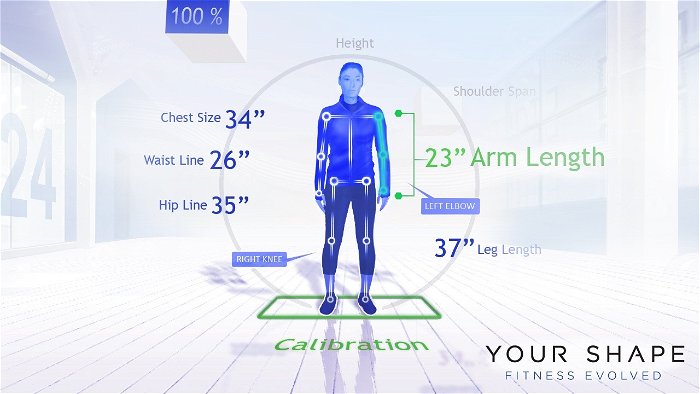
CGM: Was the 360 version of Your Shape something that came about specifically because of seeing Kinect, or were there plans even before that to bring a fitness game to the console?
NG: Well, let me tell you a story… first of all, Kinect was a technology that was developed in Israel by a company called Prime Sense. And their camera… at a certain point, Ubisoft decided to look at it and work on it. Like what they did for Your Shape on the Wii, with the 2D camera. And the main goal with this camera [for Ubisoft] was to do a fitness game in 3D, because it did a lot of new things, like I told you, the tracking, customizing everything. So Ubisoft Montreal worked a lot on it. At that’s why we’re were more advanced with the technology compared to other games that came out, because we were worked on [the camera] before Microsoft decided to buy it and launch it for themselves.
That was a good thing for us, because at this point, we could just focus on the game. That’s why we’re so advanced with what we’re doing right now. It was always planned from the beginning, it’s just that at a certain point, Kinect changed parties.
CGM: So how much time did you have with the technology before Microsoft bought it?
NG: I can’t remember exactly, since I wasn’t on the project from the beginning, but I know the project started two and a half, three years ago. And the technology, Microsoft decided to take it… about one year, or a year and a half ago.
CGM: In terms of health benefits, did you have any research data to go on that showed how effective or not exercise games were, and did that get put to use in Kinect?
NG: At the start of a project, a lot of testers were hired. But testers for video games are very different from fitness [testers]. Usually, they’re sitting all day and testing. Some of them do sports and other stuff, but the majority don’t’ do a lot of sports. So we decided to train them slowly with the game. It was interesting to see the progress they made. We don’t have any success stories about an obese man that becomes thin in a week. It doesn’t happen like that, and it wasn’t the point. We wanted see how much they progressed and how alive they seemed, just by looking at them, and how their posture was different. They were more toned, more proud.
I was always amazed because when I designed the movements, I wasn’t sure whether they were hard or not, but after trying them with the testers… It’s always hard at the beginning, but the more and more you play it, the more and more I saw them progressing. Doing it perfectly now. Especially with the help of our kinesiologist, we had a lot of help to make the perfect exercises for everyone, to adjust to every type of player, like an expert or a beginner.
At this point, it was clear to us it was about to work, so the question was, “What will be the result?” We saw that with the testers. You can lose fat, you can lose a lot of fat, but that wasn’t the point, we just wanted people to go up and move in front of the camera. Also, to get them more motivated, we also have a website, just to keep track of your progress, keep up with your friends, challenge them, all this stuff.
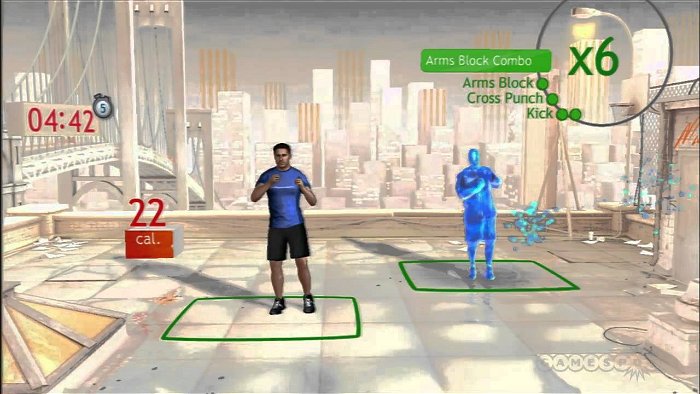
CGM: Did you rely on any medical or exercise expertise for designing the routines and exercises?
NG: Well, you’re so right, just because I’m a game designer, doesn’t mean I can design exercises. So we had the help of a lot of trainers and kinesiologists. Two were full time on the project. They helped us a lot for every move, and I worked very closes to ensure that every move was tracked by the camera and was good for the health, but wasn’t too dangerous for people that aren’t trained when they do it for the first time. We also had some fitness classes, with some thematic days like cardio boxing, we had a cardio boxer who came down and designed the class with us. Also Michael George who is a famous trainer for the stars. He trained Tobey Maguire, Reese Whitherspoon and all these famous people, went to our studio to design all these classes… and we also had Michelle Bridges. Do you know the show The Biggest Loser? There’s an Australian version of the show, and this trainer is from that show. We invited her to come to our studio and she designed three advanced cardio routines for players. A lot of experts helped in the process. It was very important for us to have the experts, otherwise our game isn’t serious at all. Like I told you, even if you’re a game designer, that’s not good enough, you need people from that [fitness] industry. Even me, I have my thing, I did some contemporary dance, and I know what happens to people who do too much, I wanted something for people to understand and apply in the game.
CGM: So what’s the message behind Your Shape? Will it build muscle, lose weight, or be a supplement to a more established exercise and diet regimen?
NG: It was important for us to just get people to stand up and move in front of the camera. Basic things and more advanced things. We don’t want to give you orders to do things. It’s more important to get motivated when training, and we don’t want to force it, otherwise maybe the motivation will die out. Our goal was to provide the most variety possible in a game, especially to make it fun while you’re doing exercises. Doing exercises in a fun and rewarding way. Your score is counted by calories and you can put them on the website, and with your friends you can compare or send challenges. Or just the fact of unlocking things in the game. Seeing that you’ve progressed from a level to another one. People will say, “Yeah, it’s because you want us to burn fat and other stuff,” but no. We just want you to stand up and do exercises. Take it for yourself. Appropriate the game. We made it for you, now just use it for you, properly.
CGM: So there’s nothing in the way of a diet plan? Other fitness games now include a feature like that.
NG: We have some tips for basic things like getting hydrated, if you’re sore we recommend you rest, otherwise it’s not good for your muscles. But we didn’t want to have a nutrition part to it. It can be interesting to some people and maybe it might be available on the website, since there are all these applications there. In the game it’s about fitness, with the applications, we can focus on which muscle you want to work, what you can add to have a better profile, all depending on your needs. With the applications going out later, a lot of things will be possible, and a lot of information will be provided to the player, just to get more motivated.
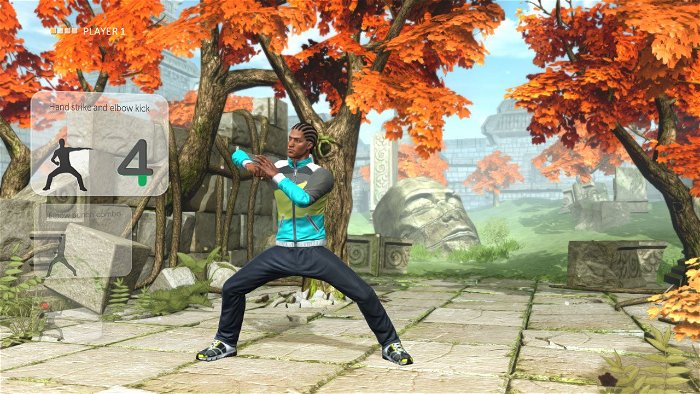
CGM: What about the audience? Unlike the Wii today, the 360 is largely considered a traditional, hardcore gaming demographic? Do you see any challenges in appealing to the fitness minded audience that Your Shape is intended for?
NG: Well, the first step was taken by Microsoft, just with the camera, Kinect. They decided to add the camera just to attract another kind of audience, rather than the hardcore gamer. On our side, the important thing was just to make a game that would appeal to a female, male, hardcore or non-hardcore gamer. And that’s it. We can definitely focus on some things, but to attract the hardcore gamer wasn’t our goal. And just the fact that we’re doing a fitness game, it’s clearly going to attract another type of audience automatically. With Kinect, Microsoft wants to attract another audience to this console. They want to give a rebirth to this console, and just make it more accessible for everyone.
CGM: Earlier you mentioned DLC for Your Shape. Could you elaborate?
NG: Right now, we’re planning on bringing more exercises to the game, more fitness apps… there’s still discussion about it right now. I can’t say much about it, but there’s a lot more to come.
CGM: No comments on pricing yet?
NG: It’s going to be like all the usual DLC things or package. Usually DLC is 5, 10, 15 bucks. Usually it’ll depend on the size of the DLC.
